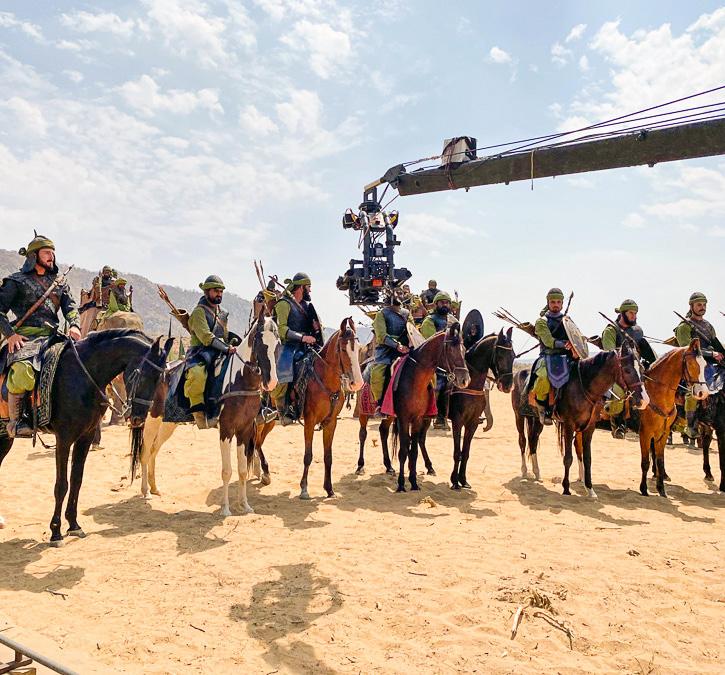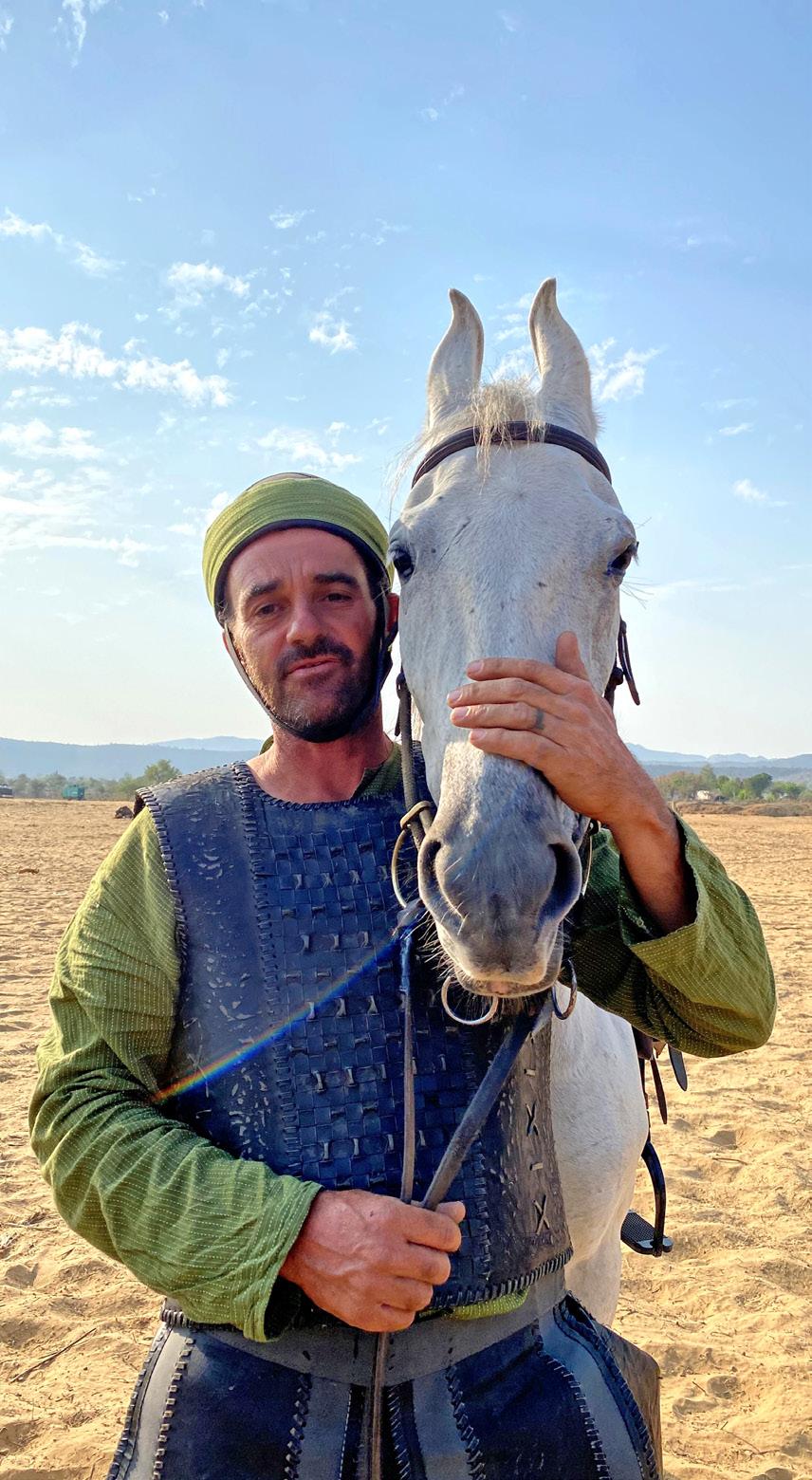
4 minute read
Breed: Gateway to the heart
BREED
Gateway to the heart
Native to India, the Marwari were in bygone times a favourite of the subcontinent’s kings and warriors, writes SUZY JARRATT.
Horsewoman Francesca Kelly once wrote: ‘To ride a Marwari is to realise new levels of joy that demand in turn, a receptive stillness for its appreciation. It is to view the way ahead through a pair of perfectly curved ears, gateway to the heart of India’s spiritual and ceremonial heritage’.
It is unlikely anyone will ever experience such enjoyment in Australia, India’s export rules are very strict regarding their native horse. Several can be seen some to her property in Massachusetts. She later donated two to Kentucky’s Horse Park and relocated her remaining herd to the UK. There is the head of a Marwari at London’s Marble Arch. The
giant statue was created by sculptor Nic Fiddian-Green, who was inspired by the elegant horses popular with the kings and warriors of ancient India.
The Marwari, which can be traced back to the 12th century, were bred for war by the Rathores, a Suryavanshi Rajput clan who once ruled India’s Marwar region. Renowned for their stamina, brave heart and unique ears, the Marwari were neglected when India was colonised in the 19th century by the British, who replaced them with English Thoroughbreds, which couldn’t cope with the conditions, and then with Australian Walers. The breed declined until independence was declared in the 1940s and it took several decades for the native horses to make a comeback.
Francesca, the stepdaughter of a British ambassador to Cairo, was immediately enchanted when first meeting these unique horses in 1995, and campaigned tirelessly for approval to import some to the U.S. In recent years, she and her business partner Raghuvendra Singh Dundlod, a descendant of Indian nobles and better known as Bonnie, tried to revive international interest in the Marwari after founding the Indigenous Horse Society of India in 1999.
Bonnie has run Dundlod Marwari Safaris in Rajasthan since 1985. It was he who sourced the horses for the BBC television series The Far Pavilion. Initially he was hired to find suitable locations, not livestock. But when the producers were unhappy with the cavalry scenes for
failing to capture the exotic and thrilling charges depicted in ancient paintings, Bonnie told them they’d used the wrong horses, and procured for the anxious filmmakers twenty-five Marwari. It was with these that he later began his safari business, offering tourists rides out through desert sands and ancient towns.

A large army mounted on Marwari was featured in Samrat Prithviraj, a big budget historical drama recently filmed in India. Specialist animal trainer and horseman Cody Rawson-Harris, one of a handful of Australians to ever encounter these special horses, was involved in their training. He remembers seeing Marwari on TV as a kid. “I thought what funny ears they have; I’d like to work with them one day.”
And he did. “I had to teach some to do stunt work, to run with riders swinging swords, to rear, work at liberty and become accustomed to fire. They were very responsive, and I was impressed with their stamina. We galloped them through the sand for a week straight. A Quarter Horse or a similar breed couldn’t have coped.”
The Marwari’s shoulder bones are less slanted than other horses, allowing them to easily pull their legs up and out of deep desert sand. This bone angle creates a leg action that’s comfortable for the rider, but doesn’t allow the horse to extend their stride as much as other breeds. Cody worked with them for months admiring their toughness. “And they have great minds; I really liked them.”
A perfectly adapted desert horse, the Marwari has a fine and silky coat, hard hooves and can travel great distances on little water. To cope with sandstorms they have developed long eyelashes and unique lyre-shaped ears which can rotate 180 degrees individually or together. This skill gives them superior hearing, as the ears act as a radar warning them of danger. Generally with long backs and sloping croups, males reach an average of 15hh and females 14hh. They can be of any colour. Greys are considered the most valuable with piebalds and skewbalds the second-most favoured. Superstitious buyers avoid black horses as the colour symbolises death and darkness. Those with a blaze and four white socks are considered lucky.
Hair whorl placements are similarly important to some. Long ones down the neck are a good omen and those on the fetlocks are thought to bring victory, whereas horses with whorls below their eyes are unpopular as they usually have above-average intelligence and are therefore likely to be a nuisance.
The facial profile is straight or slightly Roman, the neck is arched and carried high running into pronounced withers with a deep chest and broad, muscular shoulders. Recent DNA tests suggest the Marwari aren’t descendants of the Arabian, as was originally thought, but come from an older breed indigenous to India. If so, it would make the Marwari one of the oldest known breeds in the world.
ABOVE: Marwaris working on the set of Samrat Prithviraj, a historical action drama. FACING PAGE: Marwari horse at liberty and running through fire.











